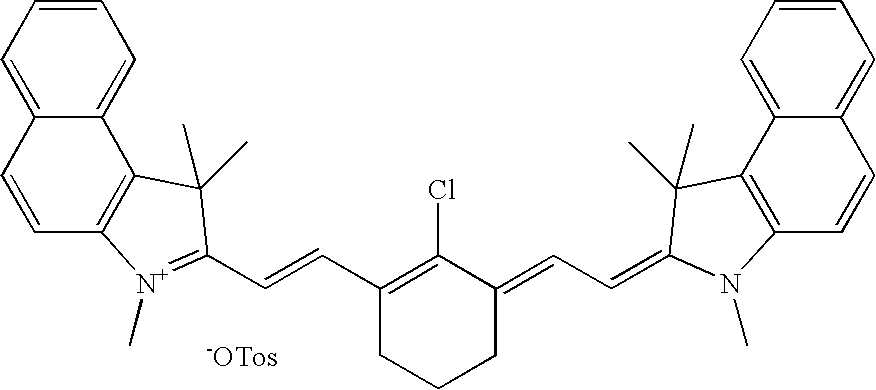Method of making a lithographic printing plate
a lithographic printing and printing plate technology, applied in the field of making lithographic printing plates, can solve the problems of inability to achieve on-press processing, lack of daylight stability, and inconvenience for end-users, and achieve the effects of increasing the polymerization degree of exposed areas, high quality, and high run length
- Summary
- Abstract
- Description
- Claims
- Application Information
AI Technical Summary
Benefits of technology
Problems solved by technology
Method used
Image
Examples
examples
Preparation of Aluminum Support S-1
[0139]A 0.3 mm thick aluminum foil was degreased by spraying with an aqueous solution containing 26 g / l of NaOH at 65° C. for 2 seconds and rinsed with demineralized water for 1.5 seconds. The foil was then electrochemically grained for 10 seconds using an alternating current in an aqueous solution containing 15 g / l of HCl, 15 g / l of SO42− ions and 5 g / l of Al3+ ions at a temperature of 37° C. and a current density of about 100 A / dm2. The aluminum foil was then desmutted by etching with an aqueous solution containing 5.5 g / l of NaOH at 36° C. for 2 seconds and rinsed with demineralized water for 2 seconds. The foil was subsequently subjected to anodic oxidation for 15 seconds in an aqueous solution containing 145 g / l of sulfuric acid at a temperature of 50° C. and a current density of 17 A / dm2, then washed with demineralized water for 11 seconds and post-treated for 3 seconds by spraying a solution containing 2.2 g / l of polyvinylphosphonic acid at ...
PUM
| Property | Measurement | Unit |
|---|---|---|
| wavelength range | aaaaa | aaaaa |
| wavelength range | aaaaa | aaaaa |
| wavelength range | aaaaa | aaaaa |
Abstract
Description
Claims
Application Information
 Login to View More
Login to View More - R&D
- Intellectual Property
- Life Sciences
- Materials
- Tech Scout
- Unparalleled Data Quality
- Higher Quality Content
- 60% Fewer Hallucinations
Browse by: Latest US Patents, China's latest patents, Technical Efficacy Thesaurus, Application Domain, Technology Topic, Popular Technical Reports.
© 2025 PatSnap. All rights reserved.Legal|Privacy policy|Modern Slavery Act Transparency Statement|Sitemap|About US| Contact US: help@patsnap.com

